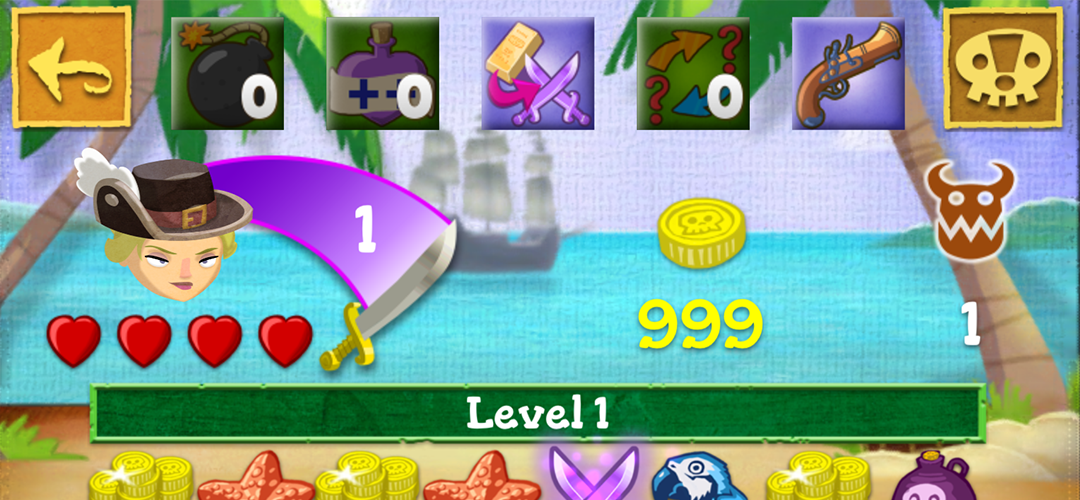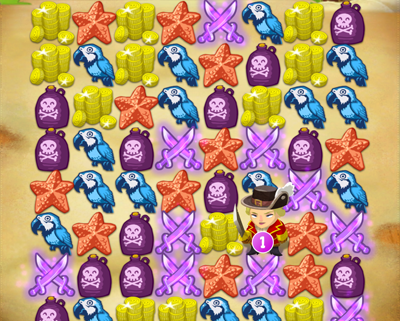How We Get Ideas for Serious Games

Previously, I shared out the game evaluation worksheet I use when playing games. It’s more than just a fun pastime for me—although I definitely love to play. It’s also part of the idea generation process for the games I design. I’ve said it many times: “you can’t design a great game if you don’t play games.”
What does it mean to evaluate a game? What format should you use? Read on.
Sample Game Evaluation

Scurvy Scallywags is a game I recently spent hours playing over a period of weeks (along with Candy Crush, which I did not enjoy) so I could evaluate the game elements within that made the game so addictive. Both Scurvy Scallywags and Candy Crush rely on the same core dynamics of alignment and exploration, but the play experience is quite different. Here’s my game evaluation of Scurvy Scallywags, using the game evaluation worksheet that I’ve evolved to help me analyze games I play.
What is the game goal? Was it fun?
The game goal is for you to find the “ultimate sea shanty” (which has amazing powers). Yes, it was very fun!
What were the core dynamics? Were they fun?
The two main dynamics of Scurvy Scallywags and Candy Crush are exploration and alignment, and the concept is very simple. In Scurvy, you have a large map with numerous islands on it. You direct your ship to various islands and then select specific locations on the island to explore. Once you select a location, the second dynamic, alignment, comes into play. Specifically, you have to find three in a row of the same object (a coconut, a spider, flasks, etc.).
Swiping these items helps you align power swords that increase your character’s power in the game and lets you defeat other pirates. This, in turn, earns you gold as well as a cache of objects you can sell for gold. We start learning pattern matching in preschool, so this is not complex game play. Neither is the exploration dynamic in this game as you are merely tapping locations on a map.
- I found both dynamics to be fun. However, the “fun” in it is not the dynamics by themselves. It is the game elements incorporated into them, You could have a very un-fun game that relies on pattern matching. The fun comes from the rewards and achievements you earn and in the problem-solving you do to identify the most strategic matches to make to get at least three power swords to align, which increases your power rating.
What were three game mechanics that stood out as good/bad?
- You start with three pirate hearts in the game. Battling against a pirate who is more powerful than you will cost you one of those lives.
- If you accrue sufficient gold, you can purchase an additional pirate’s heart.
- The direction in which you swipe your “three of a kind” items will dictate how you and your enemy pirates shift around on the game board, which makes it possible for you to dodge or evade enemies with carefully considered moves.
Which game elements did you notice as you played? Write a note on one that stood out and explain why:
- This game contained many different game elements: great aesthetics with lots of varying game boards and items to swipe, a clear theme (pirates and a treasure map), a backstory and continuing narrative thread, numerous different resources that you could purchase or earn by progressing through the game, levels of difficulty, strategy, some chance (you never knew when a new enemy would appear), and competition (against the enemy pirates in the game).
- The game element that stood out most to me were the resources. These varied quite a bit in terms of their cost and their benefit so I spent time considering which resources would be most advantageous to me. If I were to pick a second item, it would be the feedback in the game, which was voluminous.
How did you know how well/poorly you were doing in the game? What feedback did you get?
- There was a display that showed me the number of pirate hearts I had remaining.
- There was a power rating that showed me my current power level, which was critical to monitor so I did not prematurely attack an enemy who had more power than me.
- I had a display that showed me how much gold I had accrued on any game board.
- I had an “enemy pirate” counter to show me the number of pirates I had to defeat. As I defeated an enemy, the counter would track that, too.
- I had various dashboards available within my menu that showed me status info regarding what level of ship I had, what I had available to purchase, etc.
So what?
How does this game evaluation help you? This level of analysis can help you consider game elements you might incorporate into a learning game. It can also help you think about how to provide feedback to players, how to reward players during game play, and how to increase the “fun” factor in a game. You might discover an amazing game mechanic (rule of play) that you can incorporate into a learning game. Here’s what I took from Scurvy to incorporate into a game we have in development:
- The idea of a clothing item for an avatar as signaling progress in the game and rewarding the player for achieving a certain level of performance.
- The ability to evaluate how much complexity is going to be too much complexity for a learning game. In Scurvy, it’s very fun to have so many resources to consider and incorporate into a strategy. By playing the game, I could see that the number of resources and options needs to be winnowed way down to avoid too much cognitive load on the player.
- The element of surprise in terms of earning a reward you didn’t realize was possible to earn. Several times in the Scurvy game, I received bonus points due to a great action I’d taken – but I didn’t know beforehand that the potential to earn these points was possible. This element of positive surprise kept me playing. I want to incorporate that same idea into the learning game we are developing.
Download the Game Evaluation Worksheet
Download the Game Evaluation Worksheet for yourself! Use it to evaluate game mechanics and game elements for use in your own serious games.





